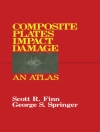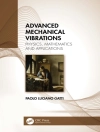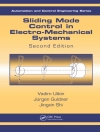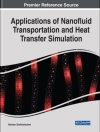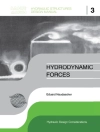The book provides an overview of prospective material simulants for hard tissues, such as knee joints, hip joint, and bones, and soft tissues, such as skin, muscles, and functional organs. These materials can repair, replace the functionality, or mimic the mechanical, structural, and biological properties of the parent tissue. This book discusses hard and soft human tissue simulating biomaterials under a single umbrella, covering a broad area of design and development of biomaterials, implants, and multi-functional materials along with their characterization. The progress in emerging biomaterials has increased manifold in the recent decades with the unprecedented focus on healthcare technologies. This book is dedicated to ground-breaking research in biomaterials and highlights the current trends and future roadmap of different materials for simulation of hard and soft tissues. Authored by prominent researchers around the globe, the chapters of this book emphasize recent advances in biomedical material simulation. This book brings together novel contributions to different aspects of hard and soft human tissue-based biomaterials, including recent advances and emerging developments in designing and developing simulants for tissue replacement alternatives. This book is anticipated to serve as a key reference textbook for research in tissue engineering & biomedical engineering, biomaterials, biomechanics, and implant & medical device development with contributed chapters solicited in the areas of soft materials, such as elastomers, hydrogels, etc., for various applications; auxetic metamaterials; additive manufacturing of bio-implants; artificial tissues and organs; development of biomimetic materials; medical implants and biomedical device design; bioinspired and bio-tribological materials; advances in materials science for biomaterial applications; biomechanical characterization of hard and soft human tissues; bioprinting and nano-biomaterials.
قائمة المحتويات
1. Auxetic Materials for Biomedical and Tissue Engineering.- Advances in Orthotic Prosthetic Design: Challenges and Applications.- Research Progress of Self-healing Elastomers Materials: Processing and Characterization
عن المؤلف
Arnab Chanda
Dr. Arnab Chanda works as Assistant Professor in the Centre for Biomedical Engineering, IIT Delhi, and Joint Faculty at the Department of Biomedical Engineering, AIIMS, Delhi. He is also the founder of a start-up company BIOFIT Technologies LLC, USA. Dr. Chanda is an expert in the fabrication and mechanical characterization of tissue mimics, and has previously developed artificial surrogates for human skin, muscles, brain, artery, and plantar fascia, and tested them in lab and clinical settings. These experimental models have been used extensively to conduct surgical training and study a wide range of injury scenarios. To date, he has received young researcher awards from ASME and MHRD and holds 7 US patents and 2 Indian patents. He has authored more than 85 articles in reputed international journals and several tech-transfers. Currently, Dr. Chanda heads the “Disease and Injury Mechanics Lab (DIML), ” where his team works on developing cutting-edge healthcare technologies for disease mitigation for diabetic ulceration, cerebral aneurysm, severe skin burns, slips, and falls, etc., in India.
Sarabjeet Singh Sidhu
Dr. Sarabjeet Singh Sidhu is the Associate Professor and Dean Research at Sardar Beant Singh State University, Gurdaspur, Punjab, India. He completed his Ph.D. from Thapar University in 2014. Broadly, his area of research is related to surface modification, NDT, metallic composites, biomaterials, and non-conventional machining processes. He believes in collaborative work. As a result, he was invited to various international platforms as Joint Research Partner and Eminent Speaker. He has published 100+ technical papers in reputed national and international journals and conferences, acted as a potential reviewer for several journals, and chaired various technical sessions. His research is currently aimed at developing novel β-titanium alloys as biomaterials. He served as an editor ofmany reputed journals, books, and conference proceedings. Lately, he was awarded the ISTE Best Teacher Award 2021.
Gurpreet Singh
Gurpreet Singh is a Ph.D. scholar in the Centre for Biomedical Engineering, Indian Institute of Technology Delhi, India. He is a recipient of the most prestigious Ph.D. fellowship in India, the Prime Minister’s Research Fellowship (PMRF), in the May 2021 cycle. His research interests include soft tissue mechanics, artificial tissues, biomimetics, and computational biomechanics. He is working on the computational modeling of diabetic foot and its urceleration progression. He is also working in developing artificial human tissue surrogates for injury and disease modeling. Previously, much of his work has been on improving the surface characteristics and bioactivity of metallic biomaterials, with research interests including surface engineering, materials science, biomaterials, and non-conventional machining processes. Heworked on the surface modification of metallic biomaterials using electro-discharge machining, where he studied the bioactivity of modified surfaces in terms of wear resistance, corrosion resistance, and other biological responses. He has authored one book and contributed more than fifty research papers and book chapters to leading international journals and conferences. He is also serving as a reviewer for prominent journals worldwide.


